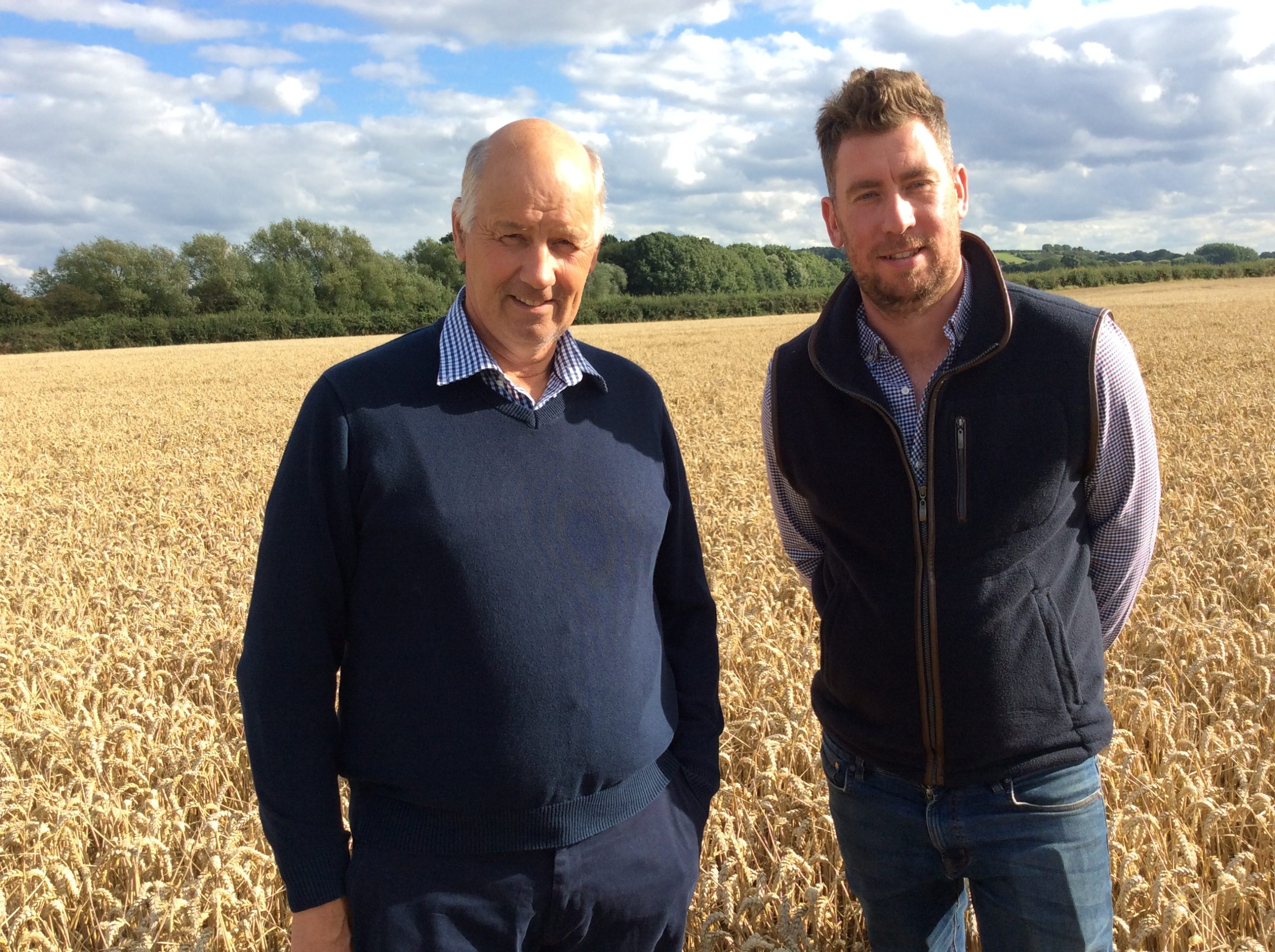When BASF Agronomy Manager, Colin Mountford-Smith heard about the ryegrass challenge Rob and Peter Barlow were facing, he wanted to help.
The father and son team had recently taken on 160ha infested with the weed and while they had made great progress with two years of careful management, a couple of very stubborn, problem fields remained.
“Back in 2019 a neighbour was retiring and we thought we’d like the opportunity to take on his block of land,” explains Rob. “From looking and talking over the hedge, we knew there was an issue. A traditional approach to farming, combined with a history of baling contractors, had enabled ryegrass to get a firm hold and spread prolifically.”
Rob and his father farm a total of 260ha of land rented from the Crown’s Bingham Estate in Nottinghamshire. Soil types vary from gravel through to heavy loam.
Cultural controls change the direction of travel
While spring cropping isn’t an option, the duo use a combination of Westwold grass and maize to get the same benefits.
“After harvest, we drill the grass, and graze it over winter,“ explains Rob. “In the spring, a cut of silage is taken before it is sprayed off and the maize crop is sown. It’s working well and controlling the ryegrass.”
Where fields haven’t been ploughed for 5 or 6 years they’ve been able bury the seed and apply Luximo. “That’s had great results and really brought the ryegrass back under control,” notes Rob.
Delaying drilling is another tool being deployed across the acreage, though Rob admits there’s often a conflict between getting a crop established and optimising weed control. “Clean land is drilled first, usually at the very end of September,” he says.
To minimise the risk of spreading seed, the order of fields is the same for spraying and combining. It’s another area where Rob tries to be meticulous. “All the machinery is blown off and washed down to reduce the risk. We go into the cleanest blocks first and do the dirty ones last.”
Can Luxinum® Plus tip the scale?
On the home farm, the herbicide programme has historically been Liberator (flufenacet and diflufenican) plus Stomp Aqua (pendimethalin) at pre-emergence followed by Axial Pro (pinoxaden) at post emergence, and it’s worked well. However, on the new acreage, Rob noted too many survivors.
“Our agronomist, Graham Partington, took samples and sent them off for testing. We weren’t surprised when the results showed RRR resistance,” notes Rob.
It was one of the reasons Rob and Peter accepted Colin’s proposal to trial Luximo® on their worst remaining field.
“With such a difficult and high population of ryegrass, it was the perfect opportunity to really test Luximo’s performance,” explains Colin.
The crop of Typhoon was drilled across the 24ha field on the 9th October 2022, and herbicide treatments applied on the 11th October.
“In the middle of the field, we applied 0.7L Luxinum Plus + 2.0L Stomp Aqua pre-emergence , and around it, the ‘farm standard’ of 0.6L Liberator + 2.0L Stomp Aqua. Both blocks were followed up with a spring post-em application of 0.8L Axial Pro. For benchmarks, there were also three smaller blocks treated with Liberator + pendimethalin, Luxinum Plus + Stomp Aqua, and an untreated block. ”
At final count on 25th May, the untreated plot had over 670 ryegrass heads/m2. Of the treated plots, Luxinum® Plus + Stomp® Aqua had the greatest efficacy with just 89 heads/m2. The farm standard of Liberator + Stomp® Aqua followed by Axial Pro resulted in 228 heads/m2.
“In the autumn, the control from the Luxinum Plus looked to be around 95%,” says Rob. “But in early spring, we were shocked to see ryegrass appearing.”
Colin explains why: “Across the UK we saw a second flush in spring 2023, with that incredibly wet March prompting a wave of late germination. ”
What’s next?
While it’s been an extremely useful case study for Rob and his father, they intend to put the trial field into a grass ley. “Ryegrass is such a massive plant that only the most serious chemistry will touch it. We can’t afford to risk it spreading to other areas of the farm,” he says.
Colin adds: “That’s why chemistry is the ‘backstop’ and all cultural controls are still critical.”
Where the ryegrass population isn’t as high as the trial field, Rob intends to continue with the cultural controls already in play. The herbicide programme, however, will undergo significant change.
“We’ll be using a lot more Luximo,” he says. “We’ve got a question mark over the Axial Pro but we will to wait for the resistance results before dropping it. If there is resistance, it’s a lot of money to spend, and as we’ve not used Avadex before, we’ve options.”

